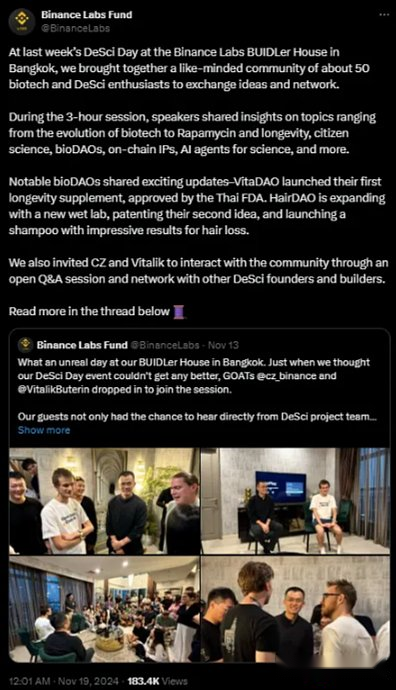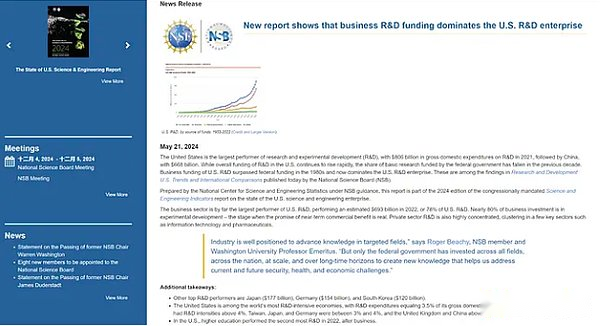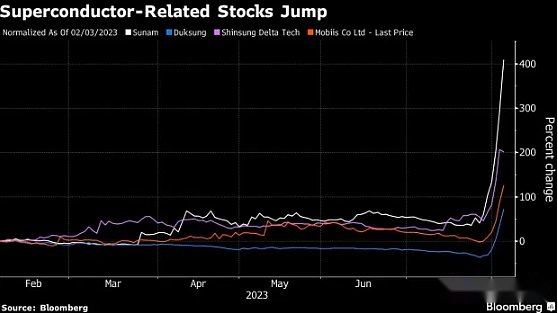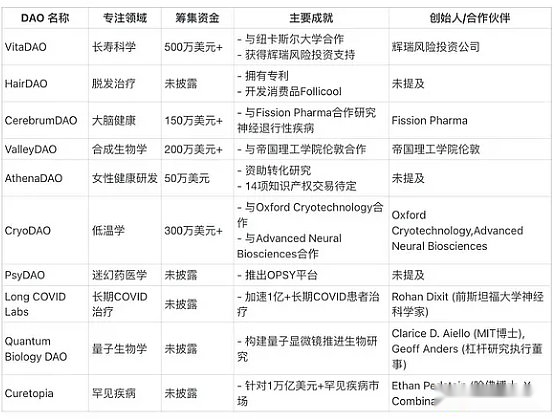
Author: YBB Capital Researcher Ac-Core
Important points
-
The rise of DeSci (Decentralized Science) is largely due to Binance Labs’ investment in BIO Protocol, CZ’s new direction statement on biotechnology, and CZ and Vitalik’s discussions on DeSci.A16z led the DeSci project AmionChain.
-
DeSci needs stronger narrative and personality support than other Meme-driven fields such as zoos, artificial intelligence and art.It also has great potential to enter a wider circle.
-
From a practical point of view, DeSci’s current economic scale is not enough to maintain research funding.DeSci is still in the early stages of “Price Dream Rate” and speculation driven by hype is essential.
1. Background
1.1 What is DeSci?
A more official explanation: DeSci (Decentralized Science) aims to use Web3 technology to build public scientific research infrastructure fairly and impartially, focusing on solving problems such as peer review, scientific research funding, IP management, data transparency, and audit mechanisms.
A simpler explanation is: DeSci is bringing pure speculation in the crypto world into the scientific research field with zero speculation.However, DeSci is not a new concept that has emerged this year. VitaDAO, which focuses on funding and promoting early longevity research, was established as early as 2021 and has even received investment from the world-renowned pharmaceutical company Pfizer.However, DeSci has been a slow-heating field, and it was not until recently when Binance Labs announced its investment in BIO Protocol, CZ and Vitalik had a discussion on DeSci that brought the field back to the public.
1.2 The birth of a trend
1. Binance Labs exclusive investment in BIO agreement:
BIO Protocol can be seen as a scientific project crowdfunding platform that raises funds through token sale and then uses to support and advance biotech projects.Intellectual property is represented by Molecule Protocol’s IPT (Intellectual Property Token) and is shared by participants.
BioDAO uses intellectual property rights and product sales revenue to supplement BioDAO’s funds to fund future R&D projects.Binance Lab describes BIO as “the Y Combinator of on-chain science.”Currently, Y Combinator’s top 100 startups have a valuation or market capitalization of over $100 billion, including companies such as Airbnb, Coinbase, Stripe and Reddit.
2. CZ’s new focus on biotechnology and discussions with Vitalik on DeSci:
During the 2024 Binance Dubai Blockchain Week, Zhao Changpeng said in his first speech after the press conference, “Currently I focus on two things: Giga Academy and Investment. My investments are mainly focused on blockchain, artificial intelligence and biology.”Technically. “Zhao Changpeng then attended the DeSci Day event held by Binance in Bangkok and discussed DeSci with Vitalik, which attracted great attention from the market, and the token prices of various DeSci projects rose sharply.
3. A16z leads the DeSci project AmionChain:
Recently, AmionChain announced it had received a $5 million seed round led by A16z, including previous investments from Cercano and other private equity funds, with AmionChain totaling $7.8 million.AmionChain’s vision is to build a decentralized “bio library” on Layer 2 where researchers can easily find and access samples while patients retain control and receive compensation for using their data.

Source: X(@BinanceLabs)
2. The real needs and real use cases of DeSci
2.1 The reality of DeSci: Funding Requirements for Scientific Research
According to the 2024 report from the National Science Foundation (NSF) and the National Center for Science and Engineering Statistics (NCSES), U.S. research spending is expected to reach $710 billion in 2023.In 2022, R&D expenditure was close to US$7 trillion, most of which came from private sector investment, especially in areas such as information technology and pharmaceuticals, accounting for about 78% of total R&D expenditure.
In 2021, except for the United States and China, the countries with the highest R&D spending are Japan (US$177 billion), Germany (US$154 billion) and South Korea (US$120 billion).In 2021, the United States’ R&D expenditure accounted for 3.5% of GDP, Israel and South Korea’s R&D intensity exceeded 4%, Taiwan, Japan and Germany were between 3% and 4%, and the United Kingdom and China exceeded 2%.In 2022, the United States ranked second in R&D expenditure on higher education, second only to commercial enterprises.Life science research is the highest funding for all science and engineering fields, reaching $42 billion (44% of the total), mainly from the U.S. Department of Health and Human Services (data can be found in the extended link).

Source: See Extended Link 1
In 2023, China’s R&D expenditure exceeded 3.3 trillion yuan (approximately US$458.5 billion), an increase of 8.1% year-on-year.Among them, basic research investment was RMB 221.2 billion, an increase of 9.3%.Compared with previous years, China has maintained a high growth rate, especially in the fields of high-tech and basic research, reflecting the strong driving force of the “technology-strong country” strategy (see data for extended link 2).
Comparison of growth in scientific research funding: China’s R&D expenditure has grown rapidly, especially in the field of basic research, reflecting China’s investment in technological innovation and high-end science.Although the United States invests more in absolute terms, its growth rate is more stable, focusing on long-term technological advancements in areas with sustained advantages.
Judging from the practical application of DeSci, it is still in the “Meme” narrative stage and has not directly promoted technological progress.Whether it is donation-driven empathy or market liquidity caused by speculative transactions, the current economic scale is not enough to support the huge amount of funds needed for scientific research.Therefore, DeSci is still in the early stage of “price dream rate”.In order to truly take off in the future, DeSci needs to meet regulatory requirements and receive continuous support from the bigwigs.
2.2 DeSci’s real academic finance case?South Korea LK-99 room temperature superconducting event

Image source: Taj Quantum — United States Taj Quantum Official Website
2023 is called the “room temperature superconducting year”, mainly because many studies claim to have discovered room temperature superconducting materials, which has attracted widespread attention from the global scientific community.However, as the research deepened, these findings were found to have major problems and even triggered academic scandals.
The incident originated from the University of Rochester physicist Ranga Diaz published a paper in the journal Nature, claiming that he had discovered a material that could achieve superconductivity at room temperature.This discovery was initially hailed as a breakthrough achievement, as the emergence of room temperature superconductors could revolutionize energy transmission, medical devices and electronics.Superconductors usually require extremely low temperatures (below -196°C), so room temperature superconductors have long been the target of the scientific community.However, Diaz’s research has faced great doubts from the outset, especially given that his academic reputation has been questioned in 2020 for similar studies.
In 2020, Diaz received widespread attention for a paper on room temperature superconducting, but the paper was withdrawn by Nature two years later.Still, Diaz published a similar research paper in 2023, re-hits interest.However, many of his peers accused him of tampering with data and even plagiarizing the content of his doctoral thesis.Several well-known media, including the Wall Street Journal and Science magazine, conducted investigations to reveal the problems with his research.The University of Rochester has also launched several internal investigations that ultimately confirmed that Diaz’s paper had “data reliability issues”, resulting in his removal from the regulatory responsibilities of the lab and students.In November 2023, Nature officially withdrew Diaz’s latest paper on room temperature superconducting.
The full picture of the scandal began to surface.According to the Nature News Team, Diaz’s team members did not observe the key superconducting phenomenon “Misner Effect” in the experiment, but were asked to quickly submit the first draft of the paper to Diaz.Many graduate students have doubts about some of the data in the paper, but under the authority and pressure of the professor, they do not openly question these issues.As more reviewers and experts begin to carefully review experimental data, they find that the data is likely to be manipulated.
Although Diaz’s first paper was severely criticized, he claimed that room temperature superconductivity was found in another material, a compound of lutetium and hydrogen (LuH).However, the measurement data of this study are also full of problems, with many students pointing to systematic errors in the experiment.Some people even feel that they are “deceiving themselves”.Despite growing criticism, Diaz continued to publish the paper, but eight of the 11 co-authors eventually asked to withdraw the paper.
This series of academic scandals not only seriously damaged Diaz’s reputation, but also affected the entire scientific community.The career prospects of many young scientists have become uncertain by participating in these studies, and trust in academia has been compromised.”This scandal has damaged the careers of young scientists, especially scientists in the field of superconductivity,” commented Paul Canfield, a physicist at Iowa State University.
Meanwhile, another heavyweight in the field of room temperature superconducting, the LK-99 team from South Korea, was also caught in a similar controversy.Although they claim to have discovered a new “room temperature superconductor” – PCPOSOS – in 2024, many in the scientific community have doubts about the authenticity of their research.The data presented by the team at the academic conference were similar to previous studies of LK-99 and lacked sufficient validation.

Image source: Bloomberg
After the announcement of the breakthrough in superconducting technology, some Korean stocks related to superconducting have attracted a large number of investors.Shares of small Korean companies such as Duksung Co. and Sunam Co. have hit the daily limit for three consecutive days, up 30%.Sunam Co. has surged about 260% in the past six trading days, while Duksung Co. has risen 170%.Mobiis Co. rose 30% on Thursday, while Shinsung Delta Tech Co. rose 21% at one time, a record high.
Subsequently, the verification committee of the Korean Superconducting Society stated in the investigation that LK-99 did not show the Meisner effect and could not prove that it was a superconductor.The news caused fluctuations in the stock prices of Chinese superconducting stocks, and the stock prices of Falson and Zhongfu Industrial fell sharply.The former does not involve superconducting technology, while the latter only provides space and equipment support.Meanwhile, the share price of the US Superconductor Company fell 29%, and Sumitomo Electric also fell due to poor profits.
3. Overview of DeSci Ecosystem
3.1 BIO protocol
The BIO protocol that received investment from Binance Labs is called the “Y Combinator of On-chain Science”.It is designed for early-stage company incubation and provides funds and resources to accelerate project development.According to TechFlow, the main components of the BIO protocol include BioDAO, curation systems, liquidity and IP conversions, and incentive mechanisms.

Image source: TechFlow — BIO Protocol — BioDAO
$VITA (VitaDAO): Founded in 2021, VitaDAO focuses on funding and promoting early longevity research aimed at extending human health.It is managed by $VITA token holders.
$RSC (ResearchCoin): Used to reward users for their contributions on the ResearchHub platform.The goal is to accelerate scientific research by inspiring community contributions.Anyone can earn $RSC by sharing, curating and discussing academic science on ResearchHub.
$ATH (AthenaDAO): AthenaDAO is a decentralized community of researchers, funders and advocates dedicated to promoting women’s health research, education and funding.
$GROW (ValleyDAO): A decentralized organization focused on anti-aging drugs and longevity programs.
3.2 Pump.Science
Solana-based DeSci platform Molecule DAO launched the meme token platform Pump.science at the Solana Breakpoint 2024 conference.Pump.science will issue meme tokens representing medicines on Pump.fun.Some of its concept tokens include:
$RIF (Rifampicin, rifampicin): rifampicin is an antibiotic that has attracted much attention for its amazing effect on aging.In model organisms such as C. elegans, a nematode commonly used in aging studies, rifampin has been shown to activate cells’ natural defense mechanisms to combat stress and damage.It acts like a “cell coach” that protects cells from harmful oxidative stress and maintains protein quality, encouraging cells to stay healthy and resilient.These protective effects help worms live longer and healthier.
$URO (Urolithin A, urolithin A): Urolithin A is a compound produced by the body after eating foods rich in ellagic tannins (such as pomegranates).It plays a special role in helping the human body perform “spring cleaning” at the cellular level.Ulitin A helps to clear out old, dysfunctional mitochondria (the energy factory of cells) and promotes the growth of new, healthy mitochondria in a process called mitochondrial autophagy.Research shows that it can extend the lifespan of C. elegans by making cells more efficient and viable.
3.3 Donation concept
$Scihub: Unofficial token donated by @0xAA_Science, designed to support open source research paper websites.The token is derived from the Sci-Hub Shadow Library concept, a community meme token.Sci-Hub is a non-profit, non-government platform that provides free access to academic papers.In addition to resources such as Google Scholar, Sci-Hub, LibGen and PubMed, it integrates a range of other public academic resources from Chinese and English sources, allowing for one-stop download of academic articles, patents, books, and more.
3.4 DeSci Quantum Meme
$ANTI — Anti-token and $PRO — Original token: a pair of tokens that express opposing views on meme tokens.The token was created by algorithm engineer and mathematical physics expert @sshmatrix_ and was designed to rise and fall together with 1 $ANTI and 1 $PRO.
4. How long can the elixir of immortality on blockchain last?
DeSci is not a concept that has emerged this year, and its sudden popularity can be attributed to three key factors: Binance’s investment in BIO Protocol, CZ and Vitalik discuss DeSci, and a16z leads a round of funding for DeSci project AmionChain.The market also needs a “surge is justice” mentality to promote this process.Despite the current market situation, DeSci is still largely driven by meme, but its basic attributes distinguish it from other meme-driven narratives.
-
Differences from other memes: Unlike memes in other fields such as AI, zoos, or art, DeSci needs a strong and influential figure to “promote the product.”It may not be able to sustain itself through internal community influence alone, and it needs outstanding figures from the field of “scientific research” to help drive its narrative.
-
The valuation of leading projects needs to be improved: At present, the top projects with a market value of US$1 billion have not yet been born in the DeSci field. Compared with other meme fields, DeSci still has great market potential. Major centralized exchanges have not yet launched DeSci-related tokens.There has not yet been large-scale funds in the rank market.
-
DeSci may have greater potential to break through the niche: While the PVP market is highly competitive, more attention may be gained if well-known figures with “scientific” backgrounds outside of the current circle use DeSci’s narrative to raise funds or donate.Similar to the $PEOPLE crowdfunding purchase of rare versions of the U.S. Constitution, $DOGE moon tour with Elon Musk, and the $69 million auction of Beeple’s Everydays: The First 5000 Days at Christie’s Auction, DeSci has a similar lookCore logic.Its marketing potential is comparable to Jia Yueting’s attempt to launch cars in the crypto field with PPT plans.








